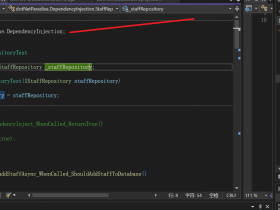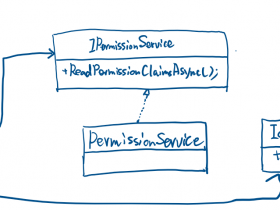- A+

新年新气象,趁着新年的喜庆,肝了十来天,终于发了第一版,希望大家喜欢。
如果有不喜欢看文字的童鞋,可以直接看下面的地址体验一下:
https://oauthlogin.net/
前言
此次带来得这个小项目是 OAuth2 登录组件,看到 Java 平台 JustAuth 项目很方便的接入第三方平台登录,心里痒痒啊,搜了一大圈,发现我大 .netcore 能用的可说是少之又少,而且代码写得一塌糊涂,全在一个库里,代码风格也看不惯,所以下定决定,操起键盘,开干。
关于 OAuth2 的一些基础、原理介绍文章太多了,写的好的不在少数,在页尾我提供了几个链接,喜欢的朋友看一下,这里就不深入解释,直入主题。
如何使用
这里拿接入 github 登录做演示,新建 Asp.NET Core Web应用程序 项目,名叫 GithubLogin(PS:你可以自己起个更牛×的名字),选择模型视图控制器这个,当然你可以选择其他的。
第一步:安装
安装这个 nuget 包:
Install-Package MrHuo.OAuth.Github -Version 1.0.0 第二步:配置
打开 appsettings.json 写入下面的配置:
{ "oauth": { "github": { "app_id": "github_app_id", "app_key": "github_app_key", "redirect_uri": "https://oauthlogin.net/oauth/githubcallback", "scope": "repo" } } } 这里的配置可以通过 https://github.com/settings/applications/new 来注册,redirect_uri 可以填写本地 localhost 地址的,超级方便,这也是为什么使用 github 登录做演示的原因。

创建完成后,在这个界面里生成 client secret:

输入密码,生成成功后是这样的:

把界面里的 Client ID,Client secret,连同上一个界面里填写的 Authorization callback URL 全部填写到配置文件对应位置。现在配置文件 appsettings.json 是这样的:
{ "Logging": { "LogLevel": { "Default": "Information", "Microsoft": "Warning", "Microsoft.Hosting.Lifetime": "Information" } }, "AllowedHosts": "*", "oauth": { "github": { "app_id": "c95fxxxxxx0d09", "app_key": "c6a73xxxxxx6375", "redirect_uri": "http://localhost:5000/oauth/githubcallback", "scope": "repo" } } } 下面的
scope暂且不管他,你想深入了解它的作用的话,后面再说。
第三步:写代码
在 Startup.cs 文件中注入组件:
// This method gets called by the runtime. Use this method to add services to the container. public void ConfigureServices(IServiceCollection services) { services.AddControllersWithViews(); services.AddSingleton(new GithubOAuth(OAuthConfig.LoadFrom(Configuration, "oauth:github"))); } 文件中其他代码没有修改,只加了这一行而已。
新建一个 OAuthController 类,代码如下:
using System.Threading.Tasks; using Microsoft.AspNetCore.Mvc; using MrHuo.OAuth.Github; namespace GithubLogin.Controllers { public class OAuthController: Controller { [HttpGet("oauth/github")] public IActionResult Github([FromServices] GithubOAuth githubOAuth) { return Redirect(githubOAuth.GetAuthorizeUrl()); } [HttpGet("oauth/githubcallback")] public async Task<IActionResult> GithubCallback( [FromServices] GithubOAuth githubOAuth, [FromQuery] string code) { return Json(await githubOAuth.AuthorizeCallback(code)); } } } 你没看错,就这点代码就好了。我们来运行一下试试:

项目运行之后,在地址栏里输入下面这个地址:http://localhost:5000/oauth/github,因为我们没有修改任何代码,没有在视图上做任何链接,所以就劳烦手动啦~~
回车之后,顺利跳转到 github 授权:

点击绿色的 Authorize 按钮之后稍等片刻,你会看到下面这个结果:

顺利拿到了用户信息(PS:请忽略我少的可怜的粉丝,曾经我不强求 --ToT)

好了,到这里我的表演结束了,可以看到接入流程非常流程,卡人主要是在申请这些步骤。下面讲讲原理之类的,随便说一些...如果觉得我啰嗦,那么就不用往下看了,因为下面我会更啰嗦。
当然,除了 github 现在已经接入了12个平台,其中 QQ 和抖音我没有注册到应用,无法测试,所以暂时没有 nuget 包,一个人的力量总是有限的,在这里我请求各位有闲时间或者有 appid 资源的大佬,为这个小项目做一些贡献,是她走的远一些。

更多的 nuget 包,进这里 https://www.nuget.org/profiles/mrhuo 或者在 VS nuget 包管理器里搜索 MrHuo.OAuth,就可以了。
请忽略
nuget上其他几个垃圾包,那是很多年很多年以前写的,舍不得删。
开发背景
第三方平台登录说白了就是实现 OAuth2 协议,很多平台比如支付宝、百度、github、微软,甚至是抖音、快手很多平台都提供了开放接口。但是,很多平台会在这个标准协议的基础上增加、修改一些东西,比如:标准协议里,获取 authorize code 时应提供 client_id,微信公众平台非要把它改成 appid。再比如:获取用户信息时,只需要 access_token 参数,微信公众平台这边非要提供一个 openid,当然这是在所难免的,因为各个平台实际业务还是千差万别,无法做到完全的统一,那这就给我们开发者带来一个困扰,开发第三方登录时很困难,当然,开发一两个也无所谓,要是多了呢?
假如有这么一个产品经理,他想接入很多的登录方式,让使用者无论使用哪种平台,都能在这里顺利登录,找到回家的路呢(PS:产品经理你别跑,看我40米的大刀)。

无疑,给我们一个考验,如何做到一个标准化,可配置,可扩展呢?这就是一个需要深究的问题。下面我就说说我肝这个项目的一些想法,说的不好别喷我,我还年轻(PS:三十多岁老大叔别装嫩),还要脸......

制定标准
看了很多文档之后,我们会发现,万变不离其宗,总有规律可循,总的来说,有下面3个步骤:
GetAuthorizeUrl
这一步通过 client_id,redirect_uri 等几个参数来获取授权 url,跳转到这个 url 之后将在第三方平台上完成登录,完成登录之后会跳转到上面提供的 redirect_uri 这个地址,并且带上一个 code 参数。
GetAccessToken
这一步里,拿到上面的 code 之后去第三方平台换 access_token。
GetUserInfo
这一步并非必须,但是我们既然是做第三方登录,登录之后还是需要和自己平台的一些业务绑定用户账号,或者使用现有信息注册一个用户,这个方法就显得尤为重要了。
到此,就这3个步骤,我觉得时需要制定在标准里面的,所以我就写了下面这个接口来规范它:
/// <summary> /// OAuth 登录 API 接口规范 /// </summary> public interface IOAuthLoginApi<TAccessTokenModel, TUserInfoModel> where TAccessTokenModel : IAccessTokenModel where TUserInfoModel : IUserInfoModel { /// <summary> /// 获取跳转授权的 URL /// </summary> /// <param name="state"></param> /// <returns></returns> string GetAuthorizeUrl(string state = ""); /// <summary> /// 异步获取 AccessToken /// </summary> /// <param name="code"></param> /// <param name="state"></param> /// <returns></returns> Task<TAccessTokenModel> GetAccessTokenAsync(string code, string state = ""); /// <summary> /// 异步获取用户详细信息 /// </summary> /// <param name="accessTokenModel"></param> /// <returns></returns> Task<TUserInfoModel> GetUserInfoAsync(TAccessTokenModel accessTokenModel); } 可以看到我将 AccessToken 和 UserInfo 做成了泛型参数,因为他们是这个规范里的可变部分。代码中 state 参数的作用呢就是为了防止 CORS 攻击做的防伪验证,这里暂不做解释,其他文档里都有这个参数的解释。

如何扩展新的平台
这里拿 Gitee 来做演示:
第一步:找平台对应 OAuth 文档,找到获取用户信息接口返回JSON,转换为 C# 实体类。如下:
根据自己需要和接口标准,扩展用户属性
public class GiteeUserModel : IUserInfoModel { [JsonPropertyName("name")] public string Name { get; set; } [JsonPropertyName("avatar_url")] public string Avatar { get; set; } [JsonPropertyName("message")] public string ErrorMessage { get; set; } [JsonPropertyName("email")] public string Email { get; set; } [JsonPropertyName("blog")] public string Blog { get; set; } //...其他属性类似如上 } 这里使用了
.netcore内置的Json序列化库,据说性能提高了不少!
第二步:写对应平台的授权接口
/// <summary> /// https://gitee.com/api/v5/oauth_doc#/ /// </summary> public class GiteeOAuth : OAuthLoginBase<GiteeUserModel> { public GiteeOAuth(OAuthConfig oauthConfig) : base(oauthConfig) { } protected override string AuthorizeUrl => "https://gitee.com/oauth/authorize"; protected override string AccessTokenUrl => "https://gitee.com/oauth/token"; protected override string UserInfoUrl => "https://gitee.com/api/v5/user"; } 加上注释,总共十行,如你所见,非常方便。如果该平台协议遵循 OAuth2 标准开发,那么就这么几行就好了。
当然,如果不按规矩自定义字段的平台,也可以扩展,比如微信公众平台。
WechatAccessTokenModel.cs AccessToken 类扩展
namespace MrHuo.OAuth.Wechat { public class WechatAccessTokenModel : DefaultAccessTokenModel { [JsonPropertyName("openid")] public string OpenId { get; set; } } } 继承自
DefaultAccessTokenModel,新增字段OpenId,因为获取用户信息需要获取OpenId,所以这里需要它。
WechatUserInfoModel.cs 用户信息类
using System.Collections.Generic; using System.Text.Json.Serialization; namespace MrHuo.OAuth.Wechat { public class WechatUserInfoModel : IUserInfoModel { [JsonPropertyName("nickname")] public string Name { get; set; } [JsonPropertyName("headimgurl")] public string Avatar { get; set; } [JsonPropertyName("language")] public string Language { get; set; } [JsonPropertyName("openid")] public string Openid { get; set; } [JsonPropertyName("sex")] public int Sex { get; set; } [JsonPropertyName("province")] public string Province { get; set; } [JsonPropertyName("city")] public string City { get; set; } [JsonPropertyName("country")] public string Country { get; set; } /// <summary> /// 用户特权信息,json 数组,如微信沃卡用户为(chinaunicom) /// </summary> [JsonPropertyName("privilege")] public List<string> Privilege { get; set; } [JsonPropertyName("unionid")] public string UnionId { get; set; } [JsonPropertyName("errmsg")] public string ErrorMessage { get; set; } } } 这里用户信息字段上边的
[JsonPropertyName("xxxx")]完全按照文档里的字段写,否则获取不到正确的值。如果不需要太多的字段,自行删减。
WechatOAuth.cs 核心类
using System.Collections.Generic; namespace MrHuo.OAuth.Wechat { /// <summary> /// Wechat OAuth 相关文档参考: /// <para>https://developers.weixin.qq.com/doc/offiaccount/OA_Web_Apps/Wechat_webpage_authorization.html</para> /// </summary> public class WechatOAuth : OAuthLoginBase<WechatAccessTokenModel, WechatUserInfoModel> { public WechatOAuth(OAuthConfig oauthConfig) : base(oauthConfig) { } protected override string AuthorizeUrl => "https://open.weixin.qq.com/connect/oauth2/authorize"; protected override string AccessTokenUrl => "https://api.weixin.qq.com/sns/oauth2/access_token"; protected override string UserInfoUrl => "https://api.weixin.qq.com/sns/userinfo"; protected override Dictionary<string, string> BuildAuthorizeParams(string state) { return new Dictionary<string, string>() { ["response_type"] = "code", ["appid"] = oauthConfig.AppId, ["redirect_uri"] = System.Web.HttpUtility.UrlEncode(oauthConfig.RedirectUri), ["scope"] = oauthConfig.Scope, ["state"] = state }; } public override string GetAuthorizeUrl(string state = "") { return $"{base.GetAuthorizeUrl(state)}#wechat_redirect"; } protected override Dictionary<string, string> BuildGetAccessTokenParams(Dictionary<string, string> authorizeCallbackParams) { return new Dictionary<string, string>() { ["grant_type"] = "authorization_code", ["appid"] = $"{oauthConfig.AppId}", ["secret"] = $"{oauthConfig.AppKey}", ["code"] = $"{authorizeCallbackParams["code"]}" }; } protected override Dictionary<string, string> BuildGetUserInfoParams(WechatAccessTokenModel accessTokenModel) { return new Dictionary<string, string>() { ["access_token"] = accessTokenModel.AccessToken, ["openid"] = accessTokenModel.OpenId, ["lang"] = "zh_CN", }; } } } 乍一看好多内容,懵了?先别懵,我一个一个来说一下:
protected override Dictionary<string, string> BuildAuthorizeParams(string state) { return new Dictionary<string, string>() { ["response_type"] = "code", ["appid"] = oauthConfig.AppId, ["redirect_uri"] = System.Web.HttpUtility.UrlEncode(oauthConfig.RedirectUri), ["scope"] = oauthConfig.Scope, ["state"] = state }; } 细心的读者发现了,这一段就是为了构造 Authorize Url 时后边的参数列表,返回一个 Dictionary<string, string> 即可,以为微信公众号把 client_id 字段修改为 appid,所以这里需要处理一下。
public override string GetAuthorizeUrl(string state = "") { return $"{base.GetAuthorizeUrl(state)}#wechat_redirect"; } 这一段,在 Authorize Url 后边缀了个 #wechat_redirect,虽然不知道微信在这个参数上做了什么文章(PS:知道的朋友,言传一下~~),但是他文档里写就给他写上吧。
protected override Dictionary<string, string> BuildGetAccessTokenParams(Dictionary<string, string> authorizeCallbackParams) { return new Dictionary<string, string>() { ["grant_type"] = "authorization_code", ["appid"] = $"{oauthConfig.AppId}", ["secret"] = $"{oauthConfig.AppKey}", ["code"] = $"{authorizeCallbackParams["code"]}" }; } 同理,这一段是为了构造 GetAccessToken 接口参数。
protected override Dictionary<string, string> BuildGetUserInfoParams(WechatAccessTokenModel accessTokenModel) { return new Dictionary<string, string>() { ["access_token"] = accessTokenModel.AccessToken, ["openid"] = accessTokenModel.OpenId, ["lang"] = "zh_CN", }; } 同理,这一段是为了构造 GetUserInfo 接口参数。
可以看到哈,这个框架本者自由、开放的原则,任何能自定义的地方,都可以自定义。还有我原本的出发点,并非只针对 OAuth 登录这一个方向,我想把他平台里面提供的 API 全部接入进来,因为扩展太容易了,但是吧,时间精力有限,再说人上了年纪,过了30岁,脑袋就不怎么灵光了,所以机会留给年轻人。
加入贡献
我期待更多的朋友能加入到这个项目中,贡献代码也好,贡献 appid 资源做测试也好,提供意见建议也好。如果你也感兴趣,请联系我。
如果觉得有用帮到你了,贡献幼儿园之星 ⭐,点个关注,fork 走一波~~(PS: 手动调皮)
相关文档:
- OAuth2:https://oauth.net/2/
- Github: https://github.com/mrhuo/MrHuo.OAuth
- 官网:https://oauthlogin.net/




